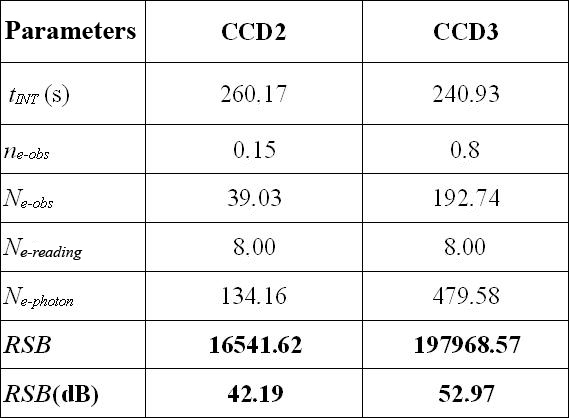Determining the signal-to-noise ratio
The assessment of the signal-to-noise ratio (SNR) takes into account noise sources. In the table documentation, the number of quantization bits for each sensor is not specified. Nowadays, sensors have 12-bit digitization and the digitization noise is highly inferior to all the other noise sources of the sensor (especially the read noise, dark noise and photon noise). The signal-to-noise ratio can be given by:
We can assess this SNR for an integration time close to the saturation point as it is calculated in Table 3. Then, we have:
with:
That is:
The SNR assessment for both CCD2 and CCD3 sensors can be found in table 4.

We can see that the best SNR is obtained with CCD3. On the face of the discussion proposed in this document, we should choose CCD3.
According to the requirements, other parameters should be taken into account, like for example the spatial resolution or the acquisition rate.